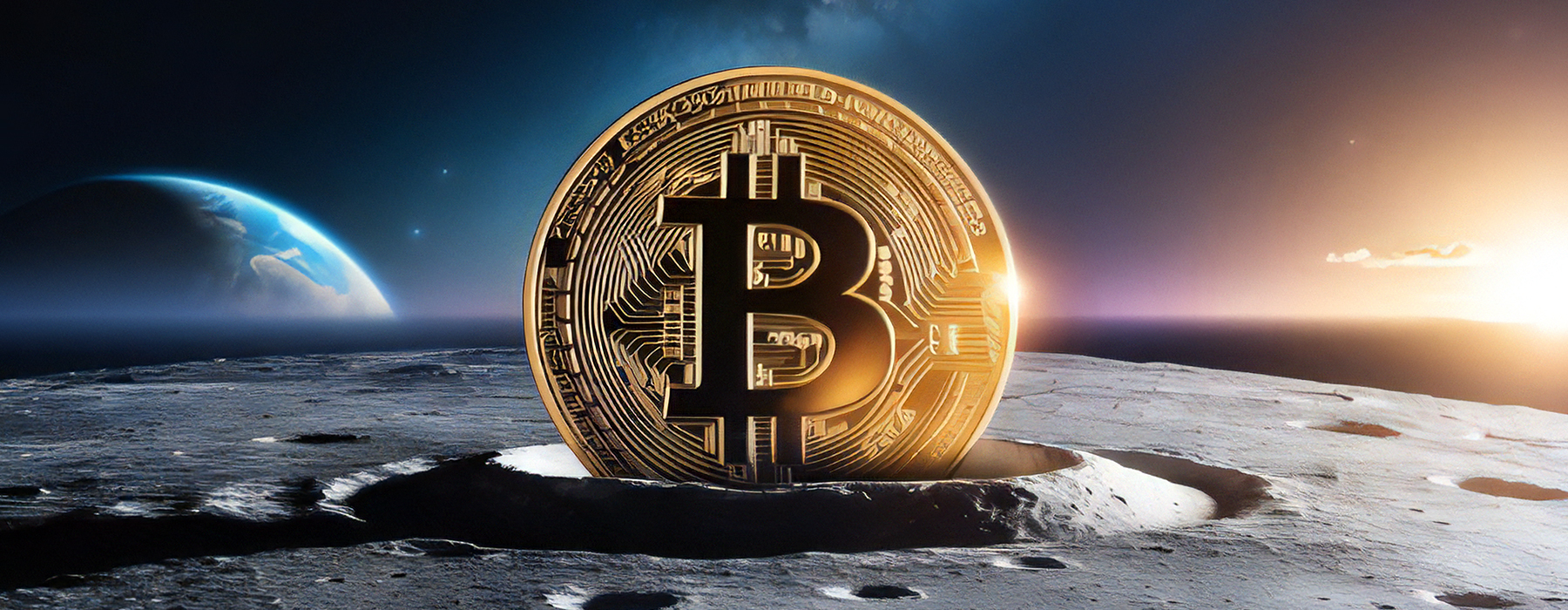Cryptocurrency is a digital currency that exists on decentralized systems called blockchains. Cryptocurrency is a general term for all digital currencies. These can be accessed using crypto wallets.
What is the relationship between cryptocurrency and blockchain?
In 2016, Fabricio Santos described the concept of blockchain as a bank vault filled with rows of glass safes that everyone can see inside but cannot access. Extending this metaphor, he explained that when someone opens a new safe, they receive a unique key for that safe; however, copying the key does not copy the contents of the safe—it copies the key itself. It only grants access permission.
The uniqueness of blockchain technology lies in the fact that all transactions are permanently inscribed on the blockchain and can be viewed by anyone at any time—the blockchain records are append-only, and the history cannot be altered. Cryptocurrencies rely on blockchain’s decentralized computer networks to verify and validate ownership.
Advantages of Cryptocurrency
Secure, Instant Transactions
Cryptocurrency is rooted in privacy. This means you don’t have to provide your personal information to every entity you transact with. Using cryptography protects your financial and personal data since this information is not shared with other parties who might want access (such as advertisers or other entities you do not interact with). Cryptocurrency also allows for nearly instant transactions. Because users can access their crypto wallets immediately, the usual 3–4 day waiting period for traditional bank transfers is reduced.
Control Over Your Cryptocurrency
Traditional banking systems require you to trust the entity holding your funds. Whether it’s a bank or another payment service, these centralized entities hold and protect your money but might also use it in other ways. They could also shut down, change rules, or adjust policies, affecting your ability to use or access funds.
One benefit of cryptocurrency is that it enables you to remove intermediaries by using decentralized finance (DeFi). In DeFi, transactions are “trustless” because you don’t need to trust someone to transact. Similarly, because transactions occur over a computer network, they are “permissionless,” meaning they don’t require third-party approval.
Non-custodial wallets allow users to hold their own cryptocurrency, giving rise to DeFi, which requires owners to protect their funds but also allows them to access funds anytime.
However, cryptocurrency is not completely free of intermediaries. Crypto held and purchased through centralized exchanges like Coinbase and Binance operates more like traditional centralized banking. These organizations act as intermediaries and provide extra convenience for customers who may not want to assume responsibility for a non-custodial wallet.
Anonymity and Privacy
Privacy is often considered one of the most important features of cryptocurrency. Transactions using cryptocurrency are considered “pseudonymous.” They are not completely anonymous, but they do not require the use of government names or other identifying information. Instead, all transactions are immutably linked to your wallet address. Keeping your crypto wallet confidential and private is a useful tool, especially for people from historically marginalized groups.
Things to Keep in Mind When Using Cryptocurrency
New and Evolving
Although blockchain technology was developed in the 1990s, Bitcoin (the first cryptocurrency) was not launched until 2009. This means everyone is experiencing growing pains simultaneously.
It is Decentralized
Because of blockchain’s decentralized nature, you cannot call a central bank to resolve any issues that may arise. This is especially true if you choose a non-custodial wallet rather than a custodial one. To recap, there are two types of crypto wallets: custodial and non-custodial. Custodial wallets are managed by third-party companies, while non-custodial wallets are not. Non-custodial wallets give you full control and responsibility, which is why protecting your access keys is so important.
How Are People Using Cryptocurrency Now?
Since Bitcoin’s launch in 2009, the scope and usage of cryptocurrency have grown significantly. Cryptocurrency can now be used to purchase everything from NFTs (non-fungible tokens) on OpenSea to physical goods and real-world services (McDonald’s now accepts Bitcoin, and in some regions, Google Cloud accepts Bitcoin and Ethereum as payment for cloud infrastructure).
How Will People Use Cryptocurrency in the Future?
More and more merchants (and industries) seem ready to accept cryptocurrency as a payment method for any purchase. Blockchain technology as a whole is also being adopted by other industries, with potential future applications ranging from medical records to mortgages.
Types of Cryptocurrency
There are two types of cryptocurrency: coins and tokens, with some key differences.
Coins
Coins are tied to specific blockchains and run only on the blockchain’s decentralized system. They can be inherently more volatile (unlike stablecoins, which are pegged to more stable assets—more on this below).
Some of the most widely used coins include:
Bitcoin (BTC) – The first cryptocurrency and currently the largest by market cap. Accepted at some retail stores, car dealerships, and via PayPal.
Ethereum (ETH) – A decentralized open-source blockchain known for its smart contract capabilities, which led to the popularity of NFTs.
Polygon (MATIC) – An Ethereum-compatible sidechain allowing developers to build scalable dApps with lower transaction fees.
Solana (SOL) – Known for lower gas fees and faster transactions, enabling developers to build dApps using a historically proven approach.
Avalanche (AVAX) – An environmentally focused cryptocurrency specializing in smart contracts.
Tokens
Tokens are built on blockchains. Stablecoins are a popular token type that differ from coins because they are pegged to external references to reduce volatility.
Examples include:
Tether (USDT) – The third largest cryptocurrency and biggest stablecoin, pegged to the US dollar.
USD Coin (USDC) – Usable across multiple blockchains, it is a native digital dollar online, redeemable 1:1 for USD.
Dai (DAI) – A stablecoin operating on the Ethereum blockchain, similar to USDC, easily redeemable for dollars.
What Are the Benefits of Decentralization?
Blockchain technology is not controlled by a single entity (like a central bank); instead, it is supported by numerous computer systems ("nodes") that back the blockchain (this gives it its "decentralized" characteristic). The responsibility for securing it falls on those who validate or mine the blockchain via a “consensus mechanism,” where nodes must agree that transactions are valid before they are recorded. (Common mechanisms include Proof of Work or Proof of Stake.)
Despite cryptocurrency often being described as secure, it is important to adopt best practices to keep it safe. Never share your wallet’s seed phrase, be careful when operating wallets, and thoroughly evaluate NFTs before purchase. If something seems too good to be true, it probably is.**
How Do I Access My Cryptocurrency?
You access your cryptocurrency using a crypto wallet. An important point to remember is: your cryptocurrency does not actually exist inside your wallet (like cash in a physical wallet); instead, your wallet unlocks the keys to the cryptocurrency stored on the blockchain (similar to how you use a debit card to withdraw cash from an ATM).
To add cryptocurrency to your wallet, you can purchase it from exchanges like Binance or Coinbase. Many NFT-compatible wallets also support adding cryptocurrency directly via services like Moonpay or Wyre. These services integrate into the wallet, allowing you to buy cryptocurrency using credit or debit cards, bypassing the need for crypto exchanges. During this process, you might be asked to verify your identity.
What is the Relationship Between Cryptocurrency and NFTs?
Both cryptocurrency and NFTs rely on blockchain technology. The key difference is that cryptocurrencies are “fungible” (interchangeable) tokens, whereas NFTs are “non-fungible” (unique and non-interchangeable) tokens. For example, one Bitcoin is the same as another Bitcoin, but each NFT is unique by definition.
To buy NFTs, you need cryptocurrency and a crypto wallet. Your crypto wallet allows you to access both cryptocurrency and NFTs, so it’s important to ensure your wallet supports both. Although many NFTs on OpenSea can be purchased using credit or debit cards, NFT transactions themselves occur using cryptocurrency. You can read more about how to buy NFTs here

 简体中文
简体中文  English
English  Deutsch
Deutsch  Français
Français  Español
Español  Português
Português  Italiano
Italiano  にほんご
にほんご  Nederlands
Nederlands 



